Game of backgammon rules. Neds: Rules for the game for beginners. Restrictions and illegal movements to start the game, each player throws one bone. This determines which of the players walks the first
Game of backgammon rules. Neds: Rules for the game for beginners. Restrictions and illegal movements
To start the game, each player throws one bone. This determines which of the players goes first and what numbers for his first move he uses. If both players have the same numbers, they both throw bones until various values fall out. Implemented on:
A player who has a larger number drops out bones and begins the game first.
Option of the rules: a player who has a larger number moves his chips in accordance with the numbers on both bones. After the first move, the players alternately throw two bones and perform the moves. They show on each bones how many points, or pips, the player must move his chips. The player’s move is a throw of cubes (ZAR), as well as the movement of chips after a throw.
The purpose of the game
Term toss out It means to make such a move with a chip that it finds it outside the board. toss out Chips can only after all the chips came to the house. Consequently, blacks go from zone 12-7 to zone 13-18, and whites from zone 19-24 to zone 1-6 (Fig. 2).
| Rice 2. |
The movement of chips
The player throws two cubes at the same time. After the throw, the player moves any of his chips by the number of cells equal to the number of one of the cubes, and then one of any chip – by the number of cells equal to the number of another cube. That is, if “three” fell on one cube, and “five” on the other, then, accordingly, you can move one of your chips into three cells, and the other by five cells. In this case, you can move one chip to eight cells. Which move is the first to do, a larger number or smaller, does not matter. At the same time, only one chip can be taken from the head (Fig. 3).
The first throw of the party provides the players with the exclusion from the above rule. If one chip that can only be removed from the head does not pass, then you can remove the second. There are only three such shots for the player: six to six, four or four and three or three-with them the enemy chips standing on their heads interfere. If one of these combinations falls out, then the player can remove two chips from his head.
If the same number of glasses fall on both eazes (double, pash, gosh, jackpot), then the number of points doubles, i.e. The player plays as if he had threw four Zara and can make four strokes on the number of cells that fell on one cube.
Before the end of his course, the player can move his chips at his discretion, if this does not contradict the real rules. The move is considered to be done when the player from the board took his dots.If the move was unfinished or contradictory rules, the opponent has the opportunity to take a move in the form as he is made, or to consume the player to make the right move.
On one field, it is allowed to put a production number of chips. You can’t put a chip on a cage occupied by the enemy chip. If the chip enters the occupied cage, they say that it does not go.
If the enemy chips occupy six cells in front of some chip, then it is locked. It is not forbidden to build blocks of 6 chips, but all fifteen chips of the enemy cannot be locked. Implemented by: You have the right to build a fence from six chips only if at least one enemy chip is before this fence. There is a variant of the rules:
You have the right to build a fence of six chips only if at least one enemy chip entered the house.
If the player can not make a single move for the number of points that he threw it on Zazh (the chips do not go), then the player's glasses disappear, and the chips do not move at all.
If the player has the opportunity to make a full move, he has no right to reduce it, even if it is in his interests. That is, if it is more profitable for the player to make three, and there are six and there is an opportunity to go six, then you should walk six.
If a stone has fallen that allows the player to make only one move, and any of the two, then the player must choose the larger one. Smaller glasses disappear. Note: The term stone in the backgammon can be called a playing cube, as well as a combination of glasses that fell on two rations. For example, a “four-three” stone.
Throwing
The result of the game
Narks are an exciting type of board game using checkers. She has established herself as an instrument for the development of memory, logic and attentiveness. Beginning players instantly draw up into an interesting process of the game and in the future do not want to change it to another type of entertainment. Narks were invented in the east more than five thousand years ago. Ancient, as a world, the game has become a favorite way of free pastime. This entertainment has different names depending on the country. In England, it is “Backgammon”, and in Europe “Triktrak”. However, the essence of the game does not change from this, the basic rules remain and are not modified for centuries. To learn the rules of the game in backgammon is very simple. The only catch for beginners can be all kinds of exceptions and nuances depending on the type of game. The largest number of NARD variations is observed in Asia and Russia. Those who wish to master the rules of the game should first be sorted out the types of backgammon.
Backgammon are different
In general, backgammon are divided into two types of games – “long” and “short”. Separation is adopted all over the world, the rules have already settled for both options. The most ancient and simple way of execution of moves are “long” backgammon. This method will become suitable for beginners.It is easy to learn and does not contain a large number of exceptions. Another type of performance is short backgammon. It is better to start them, already owning the basic skills of the process. By and large, the short type differs from the long version by the ability to knock down the opponent's checkers. In long backgammon, this rule is excluded. Based on the prescriptions of these types of backgammon, there are a huge number of subtypes of the game. For example, a game without dice. The variant discards one of the main elements of long backgammon – zara (dice). The players themselves name the numbers based on the situation on the field. Other variants of backgammon may imply a different initial arrangement of the checkers or the houses themselves. However, all these subspecies do not change the essence of the game. Various variations of backgammon are observed only in the initial stage of the game or differ in the composition of the inventory. Beginning players are advised, first of all, to master long backgammon.
Inventory of long backgammon
Any classic type of backgammon consists of the following inventory: boards, dice (dice) and checkers. First of all, deal with the backgammon board, study it carefully. It consists of two parts and has various divisions. They look, as a rule, in the form of triangles with the top up. Sometimes divisions may be missing depending on the design of the board. However, recesses for checkers will always be marked on it. These recesses are assigned numbers ranging from one to twenty-four. Unfortunately, very often these numbers are not written on the board. For convenience, you can sign them yourself. Number one – zero is put instead of one – will be in the upper right corner, then the numbering goes counterclockwise. Thus, under zero will be number 23 – the lower right corner of the board. Seeing the numbered cells will make it easier to navigate during the game. The starting position or head of white checkers is cell 0, for black checkers it is cell 12. Many people number the board from 1 to 24. However, the ancient numbering of the board implies zero as the beginning of the order. Therefore, be careful with the designations of the points. Checkers are lined up in a row of fifteen pieces each.
The essence of the game
The goal of the game is to transfer your checkers to the house and then throw them off the board. The translation of the figures is carried out from right to left in a circle. Moves are determined by the number of zara rolled. The one who quickly throws his checkers out of the house will be the winner. Cells 18-23 will be home for white checkers, cells 6 to 11 for black checkers.
rules
Zara help to determine who owns the first move. Each player rolls the dice, the highest number gives the first move. Then the moves are distributed in turn order. Players roll the dice and move the figures based on the rolled numbers. In long backgammon, preference is always  given to more. For example, numbers 1-4 fell out. Four will be the first digit of the movement of the checker.In the initial stage of the game from the “head”, only one figure can be removed. An exception may be a unique number. For example, the drops of the dance – 3/3, 4/4 and 6/6. These numbers give the right to remove two checkers from the “head” instead of one. If during the game, your checker falls on the enemy’s figure, then it cannot be blocked. Blocking enemy moves is also not recommended. If you see that it is impossible to make a move, then it is missing. But this rarely happens. You should also always give the enemy the opportunity to transfer at least one saber into his house. As you can see, the game is not so complicated. Much will depend on good luck, because the moves determine the playing bones.
given to more. For example, numbers 1-4 fell out. Four will be the first digit of the movement of the checker.In the initial stage of the game from the “head”, only one figure can be removed. An exception may be a unique number. For example, the drops of the dance – 3/3, 4/4 and 6/6. These numbers give the right to remove two checkers from the “head” instead of one. If during the game, your checker falls on the enemy’s figure, then it cannot be blocked. Blocking enemy moves is also not recommended. If you see that it is impossible to make a move, then it is missing. But this rarely happens. You should also always give the enemy the opportunity to transfer at least one saber into his house. As you can see, the game is not so complicated. Much will depend on good luck, because the moves determine the playing bones.
There are many nuances of the game both in “long” and “short” backgammon. Since beginners are invited to initially master the first option, it is worth mentioning one of the important nuances of this game. He belongs to the casting of Zara. They should not touch the sides of the board, checkers or stand with an edge. If this happens, then the throw is considered invalid. Be careful and do not throw cubes with all your strength. Try to throw them carefully and on your half of the board. The game is considered honest if a special cup is used for ZA. In it, bones are interfered and released from it. Thus, seasoned players will not have a chance for a fraud.
Advantages of playing backgammon
The game of backgammon will perfectly develop the ability to count in the mind, help to learn how to develop strategy and tactics. You will also have to think at least a little logical way. The game of backgammon is considered the second, in terms of the degree of involvement of the left hemisphere of the brain, the game after chess. Master backgammon and shine with developed logic and thinking as a result. After mastering the long backwards, it is recommended to complicate the level of the game and switch to short backgammon. They will not seem too complicated, since the basic rules of the game are already familiar to you.
Video
A beginner who only wants to get acquainted with the rules of the game in the backgammon can first scare away the species diversity of this desktop entertainment. But, as elsewhere, do not be scared in advance. First – study the general rules of the game, which in the future will help you master other variations of this entertainment. And in general, there are two variations: short and long backgammon. A significant difference between these two species from each other is the ability to bring down the opponent's checkers, as well as the initial setting of chips. But in both variations there is a winner and the loser – the one who was able to first build his checkers overboard.
- In addition to the fact that there are several variations of the game in the backwards, there are also three types of victory, each of which is characterized by the advantage of the player at the time of taking the top above the opponent.
- The situation when the loser did not manage to bring all his checkers into the house, and the winner, in turn, led his own out of the boards, is called Mars.
- The second option is when the loser nevertheless brought his checkers to the house, but he could not take them out of the board, called “home Mars”.
- Cox has its own designation in short and long backs. According to the rules, such a victory is read out when the loser failed to shift the checkers from the house. In short backgammon – when the defeated did not manage to remove the checkers from the bar.
The balls are just as simple enough. A simple victory – 1 point, Mars – 2 points, home Mars – 3 points, for the victory of Cox – 4 points.
How to play long backgammon – the basic principle of the game
In this type of game, 2 players compete with each other on the board, which is divided into 4 subgroups, each in 6 cells. The party begins with the fact that both players build a “head” – all 15 checkers in one line on the edge of the board.
The player’s task is to move all your checkers into the house and take them off the field faster than the enemy will do.
The right of the first move is given to the one who has a large combination on playing bones. In one move, only one checker moves. An exception is the case when a double falls on the first course.
According to the throw, opponents move backgammon counterclockwise, but you can’t rearrange their checker in the cell, which is occupied by the opponent's saber. You can put all your checkers on one cell. In the case when it is impossible to make a move, the right to move is transferred to the opponent.
As soon as the checkers start into the house, they can be started to be removed from the boards.
How to play short backgammon – the basic principle of the game
Just like in long back backameds, there are 4 fields, 6 cells each, in the amount of 24. The essence of the game is to take the checkers into the house and bring it over the side faster than it will be possible to make an opponent.
But, the game process is radically different from long backsy: here the checkers move on each other, while you can even knock the opponent’s checkers from the cell. True, only if the checker is on the cell alone. In one move, you can knock down a few checkers. All of them go to Bar – the center of the board. You can walk 1-2 checkers, but if a double falls (a combination on playing bones, when both cubes are the same). If the player has not yet returned all his checkers from the “bar” to the board, he has no right to walk the rest.
As in long backs, a player who started his checkers into the house first and led them out of the board – won.
Why is it worth learning to play backgammon
The game of backgammon is a great way to pass the time when there is nothing to do at all. Also, on trains, you can often find players in the backgammon. This is a great way to make new acquaintances during the gameplay or just observe the game of two seasoned players from the side.
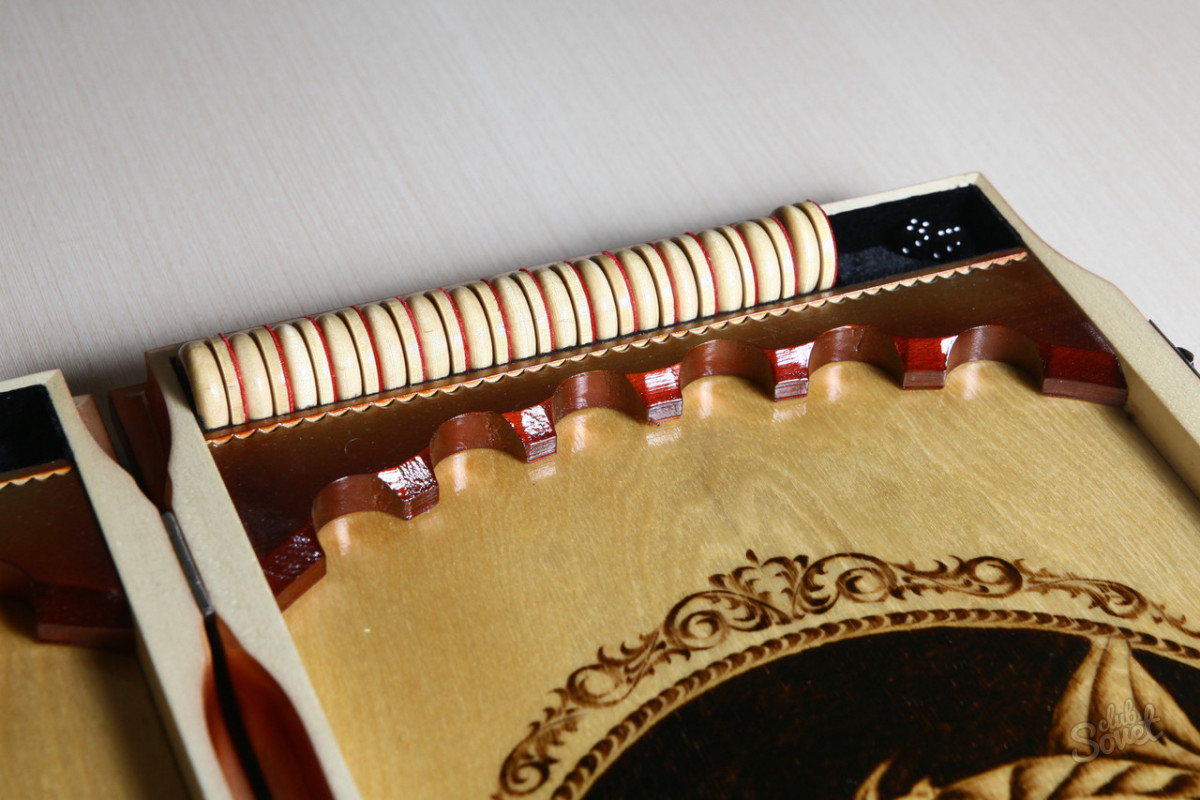
/>
Device for playing backs in backgammon, checkers and bones
In long backgammon, according to the rules of the game, they play on a board consisting of 24 points (holes). The board is conditionally divided into two equal parts with a special side (bar), with six holes for checkers on each short side.
Rice 1.Initial arrangement of checkers in a table game long backgammon
According to the rules of the game in long backgammon, each of the players have 15 checkers of the same color. Initially, all white checkers are placed in the hole under No. 1 (see Fig. 1), and white checkers in the hole 13. Wells 1 and 13 are called the head of black and the head of white. The purpose of the game in long backgammon is before the opponent to bring all the checkers to his house and remove them from the board before the second player does. The house for blacks are points with numbers from 19 to 24 (see Fig. 1), for the White House are holes with rooms from 7 to 12.
The start of the game is long backgammon
Long backgaming begins with sequential throwing out of the ZA (bones). Zara (cubes or bones) are thrown in such a way that they both fall in one half of the gaming board and steadily lay on the face. If the cubes scattered into both halves of the board, if at least one of them fell outside the boards, or at least one stood askance, leaning against the board or checker, then the throw is repeated.
The right of the first move in long back backwards is played as follows: players throw one bone, a player who threw more points, and will walk first. In the event of the equality of falling glasses, a repeated attempt is made. If after the end of the first batch the second is played, then the player who won the first batch begins it.
At the beginning of the game, there is a capture of profitable positions. Since from the head, during the move, you can remove only one checker (with the exception of the first move 3: 3, 4: 4 and 6: 6), then you need to use each move for this.
The purpose of the game in long backgammon
In the game, long backgammon, the player should go through all the checkers a full circle (counterclockwise), go into the house and throw them away before the enemy does. The house for each player is the last quarter of the game field, starting with a cage, which is detached from the head of 18 cells.
The movement of the checkers in the desktop game long backgammon
In the board game, the player throws long backgammon at the same time two cubes. After the throw, the player moves any of his checkers to the number of cells equal to the number of one of the cubes, and then one of any checkers – by the number of cells equal to the number of another cube. That is, if “three” fell on one cube, and “five” on the other, then, accordingly, you can move one of your checkers into three cages, and the other by five cells. In this case, you can move one checker to eight cells. Which move is the first to do, a larger number or smaller, does not matter. At the same time, only one checker can be taken from the head.
The first throw in the board game long backgaming provides the players with an exception to the above rule. If one checker, which can only be removed from the head, does not pass, then you can remove the second. There are only three such throws for the player: six or six, four or four, three or three. In this situation, in the board game long backgammon, it is not possible to play a full move with one checker, as the enemy’s checkers standing on their heads interfere.If one of these combinations falls out, then the player can remove two checkers from his head.
In the board game long backgammon, you cannot move two checkers by the number of cells indicated by one die, and then by the number of cells indicated by another die. That is, if five or four fell out, you can’t go first with one checker for two, then the other for three (that is, win back five with two checkers) and then win back the four in the same way. If the same number of points rolls on both dice (double, pash, gosh, kush), then the number of points is doubled, i.e. the player plays as if he threw 4 dice and can make 4 moves for the number of cells that fell on one die.
In the board game long backgammon, it is allowed to put an arbitrary number of checkers on one field. A checker cannot be placed on a cell occupied by an opponent's checker. If a checker lands on an occupied cell, it is said that it does not go. If the opponent's checkers occupy six squares in front of any checker, then it is locked. In the board game long backgammon, it is not forbidden to build blocks of 6 checkers, however, all fifteen checkers of the opponent cannot be locked. There is a variant of the rules: You have the right to build a fence of six checkers only if at least one checker of the opponent entered the house.
run, because it is done during the player's turn and does not interfere with his opponent
In the board game long backgammon, if a player cannot make a single move for the number of points that he threw out at dawn (the checkers do not go), then the player's points disappear, and the checkers do not move at all. If a player has the opportunity to make a full move, he does not have the right to shorten it, even if it is in his interest. That is, if it is more profitable for the player to make three, and six fell out and there is an opportunity to go six, then six should go. In long backgammon, if such a stone fell out that allows the player to make only one move, and any of the two, then the player must choose the larger one. The smaller points are gone. Note: the term stone in backgammon can be called a dice, as well as a combination of points that fell on two backgammon. For example, a stone four-three.
Throwing checkers in the board game long backgammon
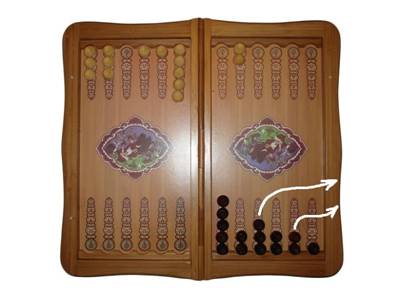
Fig 3. Black rolled 4:2. They throw two checkers
In the board game long backgammon, the term to throw out checkers means to make moves so that the checker is off the board. Conventionally, advice for the release of checkers can be divided into 3 parts: capturing positions in the fourth quarter, the correct introduction of checkers into the ejection zone and the actual release of checkers. A player can only start discarding checkers when all of his checkers have arrived at home. In the process of removing the checkers from the house, the player has the right to use the points that fell out at the dawn, at his own discretion: he can play the checker in the house or throw it away. It is possible to throw out checkers only from the fields corresponding to the dropped out eyes at dawn.For example, if 6: 3 fell, the player can remove one checker from the 6th field and one saber from the 3rd field from the board. In the board game, long backgammon during the removal of checkers from your own house is allowed to remove checkers from the fields of the lower category, if there are no checkers in the fields of the highest category. For example, if there were 6: 5 on Zazz, and there are no checkers on the fields 6 and 5, then the player can take two checkers from the house from the next in order, the fourth field, if there are no checkers, then from the third, if there is no – there is no – from the second, etc.
Results in the table game long backgammon
There are no draws in the game long backgammon. If one player threw away all his checkers, the second is considered a loser, even if the next throw can also throw away all his checkers. The party in long backgammon ends.
Building and hacking fences
The fence is the checkers built in a row of one of the players. If you managed to build a fence of 6 or more chips, then this is a dull fence because it is impossible to jump over.
The deficiency of the moves
At any of the moments of the game, we have access to a different number of moves for each of the 6 digits of Zara. There are moments when with an oak 6: 6, we are available, let's say only two moves and not four (for example, during the first move), and the moves are loss. The effective use of the deficiency of the moves of their own and the opponent is one of the most difficult in long backs and is a sign of the highest skill.
To play backgammon means plunges into an ancient tradition that has come from the East, the age of the oldest found on the very found board is at least 5,000 years.
Once this was widespread among the nobility, and the outcome of the party influenced the decisions of the rulers.
Where are white and black stones
The meaning of the process is to ensure that the player’s stones go through the full circle on the board, end up in the “House” (the last quarter of the playing board), and then the player should remove stones from the board before the opponent.
Is there a difference between long and short backgammon
 Differences in short tracks and long:
Differences in short tracks and long:
- The original placement in short ones is more complex;
- They can be shot down by the enemy single chips, which is unacceptable in long;
- In short ones there is a cube of Dawa (doubling), which allows you to double the rate, increase interest. When a doubling system was implemented in 1920, backgammon became a sport;
- The player’s skill means a lot to win. In long calls, the role of chance is great.
Short backgammon, or Backgammon, prefers most people in the West.
The result of the party is often unexpected. Sometimes it seems that one player in a hopeless situation, in one move, a desperate situation can fundamentally change. For this, this game is loved all over the world. The option of long backgammon is popular, but its rules are more simple.
Where to begin
If you sat for backgammon, how to play, you must study the rules and basic principles in advance.
Before starting the game, it is important to understand how the playing field works.
There are 24 triangles on the board called points.
Stones move along them. The original position of the checkers is called the head.
The movement is counterclockwise. You need to pass all your stones through the board to the house.

Chips are usually red and white or red and black.
The main thing is that they should differ in color.
Cubes (zara) when thrown must fall on one side of the board and lie steadily on the edge. The game is played with 2 dice.
2 numbers fall on them, for example 4-1. One checker can be rearranged by 4 points, and the other by 1.
The exception is the first move (“from the head”), you can only move one chip. If during the first move it hits the points where the opponent's chips are, then let's move with two checkers.
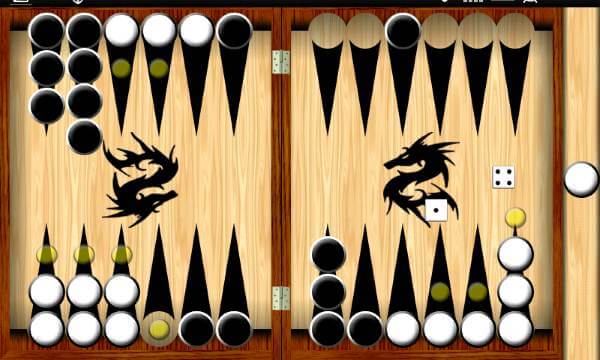
The tactic is to take as many points as possible to limit the enemy's movement.
Backgammon in social networks and for smartphones
 The social network VKontakte offers to play in applications. vk.com/igra.nardy – Follow this link to play long backgammon, short ones are here – vk.com/korotkie.nardy.
The social network VKontakte offers to play in applications. vk.com/igra.nardy – Follow this link to play long backgammon, short ones are here – vk.com/korotkie.nardy.
For iOS, there is such an application freesoft.ru/zolotye_nardy. With different designs, game options and difficulty levels. Or here gados.ru/ios/nardy-hd-dlya-ipad-ios/ classic design. You can play both short and long backgammon for free.
You can have fun and earn while playing
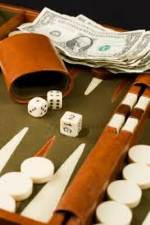 You can play for money on the following resources:
You can play for money on the following resources:
- fpclub.eu – This is one of the most popular places to win. Here you can find different variants of backgammon.
- skill7.net – On this site, you do not need to download an additional client to play. All known payment systems work.
- rushplay.com/landing/ – There is a large selection of tables. You can choose the appropriate level, size of bets, speed.
What needs to be done to win
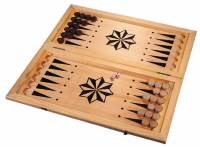 Do not forget what the essence of long backgammon is. You need to remove your checkers from the board before the opponent. Before you make a move, you should consider its benefits to you.
Do not forget what the essence of long backgammon is. You need to remove your checkers from the board before the opponent. Before you make a move, you should consider its benefits to you.
Superiority must be won from the first moves. To do this, each move you need to rearrange one chip from the initial position, and move the second forward. So soon everyone will be introduced into the game, and there will be no forgotten and blocked by the enemy.
You can not give the enemy the opportunity to occupy 3 points in a row near your head. Putting chips into the game will become much more difficult.
A special combination of dropped dice of 2 identical numbers (“jackpot”) makes it possible to make 4 moves, instead of the usual 2. Try to prepare for this. Such a case can change the course of the whole game.
Blocking the enemy on the approach to your quarters will help slow his advance forward. You need to take from 3 to 5 points in a row.
On the way to the home with checkers, you need to take the most advantageous positions from the middle of the quarter. One stone stuck among the opponent's chips leads to defeat.
In short backgammon, you should calmly follow your plan, the enemy will definitely try to confuse you if he understands your strategy.
Understanding its importance comes with the growth of skill. Mastering various tactics will bring self-confidence.
You need to keep the situation under control all the time: who is closer to victory, how to turn the game moment in your favor.
Short backgammon strategies:
- House building. It is necessary to transfer the checkers to positions in the house as soon as possible. It will be more difficult for the opponent to retreat and bring in the captured checkers. The reset phase will be closer.
- Combination. Simultaneous construction of the house and the removal of 2 checkers from the opponent's house.
- Risky game. The desire to occupy strategically advantageous positions can lead to both an early victory and an equally quick defeat.
- Withdrawal of checkers. The main task is to withdraw 2 checkers from the opponent's space. Only rolls on 5-6 and 6-6 give this opportunity.
- Anchor game. Anchors on the opponent's side at least do not prevent him from moving towards the home, but substitute his checkers for knocking out.
- Careful game. The player focuses on defense, the game can drag on. One successful move by the opponent can decide the outcome of the game.
When playing both long and short backgammon, understanding the opponent's strategy already brings your victory closer.
Backgammon develops strategic and tactical abilities no worse than chess. This game will be a test and training for attention and ingenuity.
It is worth looking for worthy real, not virtual opponents, because they can become real teachers for you, pointing out mistakes and revealing interesting combinations.




